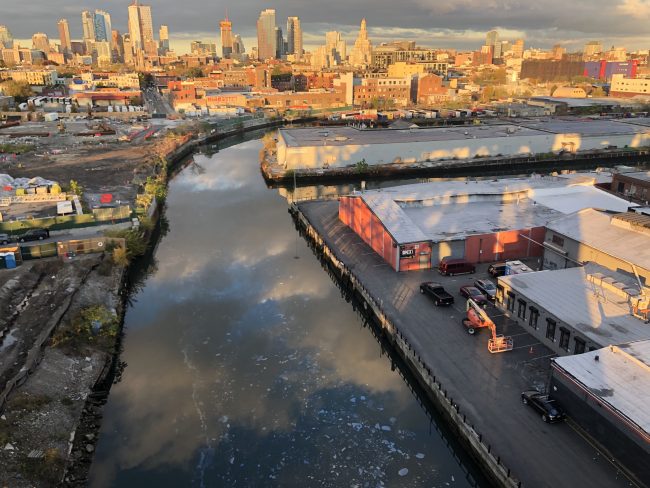Hopes & Dreams
Posted on November 14, 2019Analogue for the state of dreams
“It is hard to say what today’s dreams are; it seems they have been downgraded to hopes—hope that we will not allow ourselves to become extinct, hope that we can feed the starving, hope that there will be room for us all on this tiny planet. There are no more visions. We don’t know how to fix the planet and ensure our survival. We are just hopeful.” [1]
It’s true, I initially brushed past the first passage of Dunne and Raby’s “Speculative Everything” because I guess I am just that jaded. Its weight did not burden me. Its premise seemed unfortunate, yet obvious, and maybe even in need of a depressing amendment; are we really even hopeful at this point?
The quote was brought up in our Transdisciplinary Design seminar last week though, and I’ve been thinking more about the supposed loss of dreams from the collective imagination. Much of the work we do in TD seems to rely on a certain optimism, or hopefulness, that we can each contribute to designing better systems, which will create better ways of being for more people. But we’re at once bogged down by complexity and by the injustice that has surely mobilized us to do this type of work to begin with. This limits the reach of imagination and as Dunne and Raby call it, “social dreaming.” [1] Is it so surprising, given the constant flood of horrific information we learn about the world? Ecological disasters, corrupt politicians pulling global strings, deeply entrenched racist and imperialist ideologies that still rear their heads… The more I learn, the more doomed the world seems; and it has been designed to be this way by those who had, have, and continue to hold power. I know others of my generation share this overwhelming feeling that we are, plainly, fucked.
In psychology, there’s a term learned helplessness, “a mental state in which an organism forced to bear aversive stimuli, becomes unable or unwilling to avoid subsequent encounters with those stimuli, even if they are ‘escapable’ presumably because it has learned that it cannot control the situation.” [2] Have we as a society acquired an acute version of this condition, learned hopelessness? How do we fight the dimming of our dreams? Was there ever a time when one could dream freely? Are people elsewhere in the world able to dream, unbridled? There’s a certain nostalgia in Dunne and Raby’s aforementioned statement that I can’t fully relate to because I can’t remember a time when things were otherwise (unless it’s referencing the carefree ignorance of childhood.)
Tristan Schultz analyzes part of the problem in “What Is at Stake with Decolonizing Design.” “Because of the industrialization of memory through sociocommunicative digital technologies, people’s abilities to imagine being otherwise is being eliminated.”[3] Many ways of being that have existed for centuries through the experience of indigenous peoples and scholars of non-Western philosophical traditions have been forgotten with the proliferation of a specific type of imagination / narrative through technology. Schultz’s analysis also brings to mind the neocolonial tendency of glorifying these new technologies as the height of imagination – of equating flashy “innovation” projects with progress in humanity.
To some extent, the technologies we have at our fingertips today and which glom much of our attention spans were part of the imagination of a specific sect of past generations. They are in some ways magical and beyond comprehension. Isn’t it weird that I can talk to a metal tube and it will tell me what the weather is going to be like tomorrow? But I guess the point is, it isn’t enough nor is it worthwhile to keep designing such artifacts in a vacuum. We’re missing the “social” element of what it means to be a person in the world; what’s our responsibility to each other, to future and past generations, and to the other inhabitants of this planet? That’s truly challenging to create a collective vision around.
So as to not suck everyone into the late-semester spiral of despair, I’m going to say now that don’t feel entirely hopeless about our current hopelessness. I think efforts to seek out and center perspectives other than the ones we always hear about (white, male, American, etc.) are valuable in combating the general state of disillusionment. I only wish I had more access to these alternate ways of knowing and understanding in my education.
Schulz cites the work of Dr. Mary Graham, a scholar of Kombumerri and Wakka Wakka origin, who studies Aboriginal history and philosophy. “There is no Aboriginal equivalent to the Cartesian notion of “I think therefore I am” but, if there were, she says, it would be I am located therefore I am. For Mary, location – or more poignantly Place – equals Dreaming. There are multiple Places so there are multiple Dreamings, so there are multiple Laws that equal multiple Logics that equal multiple Truths. All Perspectives (Truths) are valid and reasonable.” [3]
While referencing a perspective I have not fully digested or understood, told through the filter of an academic roundtable discussion, I want to be wary of trivializing, diluting, or appropriating a cultural belief. Before taking some version of this into a design practice that is supposedly decolonizing, I think we (in the Transdisciplinary Design program and our colleagues) need to hear directly from those in indigenous communities, in this case the Aboriginal community that Graham is a part of.
That said, I found the concept of multiple Dreamings incredibly evocative and inspiring. To hear from the writer herself, Graham explains a Dreaming as as “a combination of meaning (about life and all reality), and an action guide to living” that an Aboriginal clan group holds as true. [4] Despite their differences, all Dreamings are inextricably tied to land and the intertwined connection of human to Earth. Our connection to one another is formed through our connection to the land we occupy and must tend to. This premise is clearly missing from the dominant Western worldview, whose sacred object as Graham says, is money, which has taken on a “metaphysical meaning” that is rarely acknowledged. [4]
I can only speak from my perspective, but I see most of us (living in a big city like New York) as altogether detached from the Earth, both metaphorically and literally. Thinking about something as basic as pavement in these terms is a shift in my default mode of existence. Our travel containers all move over densely tarred roads and creaking metal tracks that create layers of removal from the ground underneath. We’ve built dwellings that shield us from natural forces, but also hide from vision the little of nature that remains in a city. Is it easier to contribute to destroying the Earth when we don’t really see it?

Clouds reflected in a river of trash in Queens
There are many more insights to be gleaned and threads to explore in Graham’s writing, which I hope to do soon. However, there’s a call to action for educators, too. Along with the typical academic theory papers and winding conversations between scholars that argue a distinction between “plurality,” “relativism,” and “pluralism” [3] (as if anyone really knows or cares what that means), I think our education system needs to canonize more work from indigenous and non-Western perspectives. In discussions of decolonizing design, we’re still hearing the commentary and criticism through a narrow filter of the population, as well-intentioned and committed as they may be to their work.
I want to end with a reflection on this quote from Mary Graham, which stuck with me:
“The Western question, ‘what’s the meaning of life?’ is answered by the Aboriginal question, ‘What is it that wants to know?’ The Aboriginal cultural praxis maintains that one does not need work, money or possessions to justify one’s existence; in fact there is no notion of having to justify one’s existence at all.”[4]
Accepting and truly internalizing this view seems like a spiritual challenge for a lifetime, given where I am situated spatially and temporally. But I do believe that to accept this as true would be a new kind of freedom. To respond to Dunne and Raby’s initial question that opened this piece, maybe this is the dream we can aspire to.
– A. Nair
References:
[1] Dunne, Anthony, and Fiona Raby. Speculative everything: design, fiction, and social dreaming. MIT press, 2013. [2] Nolen, Jeannette L. “Learned Helplessness.” Encyclopædia Britannica. Encyclopædia Britannica, inc., December 28, 2017. https://www.britannica.com/science/learned-helplessness. [3] Tristan Schultz, Danah Abdulla, Ahmed Ansari, Ece Canlı, Mahmoud Keshavarz, Matthew Kiem, Luiza Prado de O. Martins & Pedro J.S. Vieira de Oliveira (2018) What Is at Stake with Decolonizing Design? A Roundtable, Design and Culture, 10:1, 81-101, DOI:10.1080/17547075.2018.1434368 [4] Graham, Mary. “Some Thoughts about the Philosophical Underpinnings of Aboriginal Worldviews.” Australian Humanities Review. ANU E Press, 2008. http://australianhumanitiesreview.org/2008/11/01/some-thoughts-about-the-philosophical-underpinnings-of-aboriginal-worldviews/.
